Making and keeping your own Sourdough Starter doesn’t have to be confusing.
I should know. I wanted to learn how to make a starter for so long but was overwhelmed by the process. I *thought* it was really hard to do. It isn’t. It just takes patience and a little math :-).

How to Make a Sourdough Starter
This post may contain affiliate links. We are proud to be an Amazon Affiliate. Please read my disclosure policy.
I love sourdough bread.
Actually, I love just about anything made with a sourdough starter. There’s more flavor and depth to the food and it layers in a bit of healthy fermentation that isn’t bad either.
The challenge with sourdough isn’t the baking or cooking process, it’s the starter.
Most people are afraid to make a starter.
But you shouldn’t be. A sourdough starter isn’t as hard as people make it out to be.
A traditional starter has 2 ingredients.
- Water
- Flour
That’s it.
Some people put a piece of fruit in their starters to attract wild yeasts but I don’t think that’s necessary and can cause more problems with your starter than it adds in benefit.
How a starter “works”:
Here’s a little bit of history.
The earliest archaeological evidence for leavened bread comes from Egyptian remains of around 4000 BCE. Yeast spores found in the air and on the surface of the grains produced the first raised doughs.
In Greece and Rome, the wheat used in bread wasn’t grown until about 400 BCE. From that time forward as innovations in milling and farming were developed, bread making became a professional skill.
Fast forward to the 20th century and you’ll find that bread-making became industrialized. It was this industrialization that began the downfall of artisan bread. What took hours or days to produce was minimized and commoditized by the commercial bakery and true artisan bread fell out of the mainstream.
[If you are a food history geek like me, grab the book “On Food and Cooking: The Science and Lore of the Kitchen” by Harold McGee. ]
What’s going on in sourdough?
Sourdough bread gets its name from the fact that the dough and the bread are acidic.
Think of the starter as a concentration of the acids that create great tasting bread and baked items.
The “sourdough flavor” is produced by the growth of beneficial bacteria and yeast in the dough that are created during the proofing (bulk fermentation) process.
You might be familiar with the bacteria if you eat yogurt or drink buttermilk. Many of the same bacteria are found in sourdough bread.
When you combine water and flour together in the right proportions and let it sit, the natural yeasts and the ambient yeast in the air begin to multiply. As the yeast begin to digest the sugars in the flour, bacteria and other alcohols are produced.
These bacteria, digested yeast and alcohols are what create “sour” dough.
Short on time? Ready to get cookin’? Click below to go straight to the recipe.


The Terms
It can be confusing. Leaven, Levain, Starter, Mother, Sponge, Biga, Poolish, Preferment.
Whatever you call it, it’s all the same — water and flour and yeast. The yeast can be from wild, natural yeast or activated packaged yeast.
And they are all “Preferments”.
We’ll use the term “starter” to indicate the combination of flour, water and yeast that will be used to make “sourdough” recipes.
Back in the day, starters were passed down from our grandmothers like the family china.
We don’t have that benefit today, so we’ll be making our own.
I’m a purist when it comes to my starters.
Flour and water.
The type of flour you use will depend on the flavor you want to create with your starter.
Common flours are All-Purpose Flour, Whole Wheat Flour, and Rye Flour.
This recipe is going to use All-Purpose Flour.
Ingredients and Equipment Needed
ο All Purpose Flour
ο Filtered Water
ο Thermometer
ο Digital Scale (I like this one)
ο Measuring cups if you don’t use a scale
ο Spatula or wood spoon for mixing
ο Cheese cloth
ο 2 Wide Mouth 1-Quart jars (these mason jars work great)
*You’ll need 2 jars because you want to keep your jars clean when letting rest after feeding and the mixing can create a crust on the sides that you don’t want to mix back in.
The way I do it is this:
After the first day, when I go to do my 2nd day of feeding, I’ll remove a portion of my starter (discard) and add the additional water and flour to the jar.
I’ll mix it all together then pour the new mixture into the clean jar carefully as to not get too much on the sides of the jar. Then I let that jar rest until the next feeding and start the process again.
I’ll wash the old jar to be used the next feeding.
Try this recipe and let me know what you think.
Hop over to Instagram, share your photo and tag @vineandplate and don’t forget to add the #vineandplate.
Tools to help you make a starter…
A simple thermometer to measure your water temp and gauge overall temperature for sourdough.
Never miss a recipe or wine pairing. Get my latest recipes, wine tips, home hacks, and more.
*we never rent or share our list. we promise to
keep your info safe and will not spam you.*
Ready to make a
Sourdough Starter?
Using a measuring cup instead of a scale? Use this site to convert the grams to cups/ounces.

Sourdough Starter
Description
The foundation to anything “Sourdough” is the starter.
This simple, step by step guide will help you create a starter that you’ll love for a long time.
Ingredients
Ingredients:
- All Purpose Flour — I prefer King Arthur Organic Unbleached Flour or Bob’s Redmill Organic Unbleached Flour
- Filtered Water
Equipment: (see my recommended list above)
- Scale
- Thermometer
- Mixing bowl
- Non-metal spatula or spoon
- 2 Wide Mouth 1 – quart mason jars
Instructions
Day One:
- Mix 100 grams of all purpose flour with 100 grams of filtered water at about 90 degrees F in your mason jar. Mix until well combined.
- Let sit uncovered in a warm spot for 1 hour. Ideal temperature range would be between 75 and 90 degrees F.
- Put a rubber band on the jar to indicate the starter volume.
- If you don’t have a spot that warm, not to worry, it will just take a little longer to develop so leave sitting for an additional hour.
- After your hour or two, cover with a piece of cheesecloth and let rest in a warm spot overnight.
Day Two:
- Discard 3/4 of your initial mixture.
- Mix remaining starter vigourously for about 15 seconds.
- Add 100 grams of all purpose flour with 100 grams of warm filtered water, about 90 degrees F. Mix until well combined.
- Put a rubber band on the jar to indicate the starter volume.
- After your hour or two, cover with a piece of cheesecloth and let rest in a warm spot overnight.
- You should see the starter begin to expand in size on day two after feeding. The rubber band will help you see how much the starter has grown.
Day Three:
- If it has been kept in a warmish place, you might even see your starter double in size.
- Discard 3/4 of your mixture.
- Mix remaining starter vigourously for about 15 seconds.
- Add 100 grams of all purpose flour with 100 grams of warm filtered water, about 90 degrees F. Mix until well combined.
- Put a rubber band on the jar to indicate the starter volume.
- After your hour or two, cover with a piece of cheesecloth and let rest in a warm spot overnight.
- You should start to smell the distinctive “sour” smell by day three. Especially after this third feeding.
Day Four:
- You should see bubbles throughout the starter at this point.
- Discard all but 150 grams (this time be exact) of your starter.
- Mix remaining starter vigourously for about 15 seconds.
- Add 100 grams of all purpose flour with 100 grams of warm filtered water, about 90 degrees F. Mix until well combined.
- Put a rubber band on the jar to indicate the starter volume.
- After your hour or two, cover with a piece of cheesecloth and let rest in a warm spot overnight.
Day Five:
- Your starter should have a nice sour smell and the consistency of the starter should be viscous and make a web when you pinch it and stretch between your fingers.
- Discard all but 100 grams (this time be exact) of your starter.
- Mix remaining starter vigourously for about 15 seconds.
- Add 100 grams of all purpose flour with 80 grams of warm filtered water, about 85 degrees F. Mix until well combined.
- Put a rubber band on the jar to indicate the starter volume.
- Let rest in a warm place.
- Your starter should be ready to use about 3-4 hours after this replenishment.
- Depending on the temperature in your kitchen, you might have to repeat this process for 1-3 more days.
- Once the starter is lofty and springs back, it’s ready to use. You could test the starter by dropping a teaspoon of starter in a glass to see if it floats.
- If it floats, it’s ready to bake with.
Feeding and Maintaining Your Starter:
- If you are baking 3-4 times a week, you’ll want to keep your starter out and feed it daily.
- If you bake once a week or less, you’ll want to feed your starter on a weekly basis. You can go 10-12 days in between but I don’t recommend going much longer as you risk the chance of the starter dying.
To feed your starter:
- Discard about 1/2 of the dormant starter.
- Weigh the remaining starter (minus the container)
- Use 1/2 the remaining starter’s weight as the guide for flour and water.
- If the remaining starter is 100 grams, you’ll need 50 grams of flour and 50 grams of water.
- Mix the flour and water in to the remaining starter and let it sit in a warm area.
- It should be ready to cook with in about 2-3 hours, or when it has doubled in volume and has a spongy, spiderweb like texture.
Hey, I’m Lisa and I’m glad you stopped by. I love food and wine and making things that people love. Speaking of love, that’s my hubby with me in this photo. We were in one of the many tulip fields in Holland in 2018. Such beautiful colors and these fields stretched for miles and miles. Anyway, thanks for checking out the recipe. I’d love to hear how it goes when you make it so come back to the recipe and leave a comment and rating. Also, don’t forget to share your photo on Instagram and tag #vineandplate so I can brag about you 😉 …. Read More











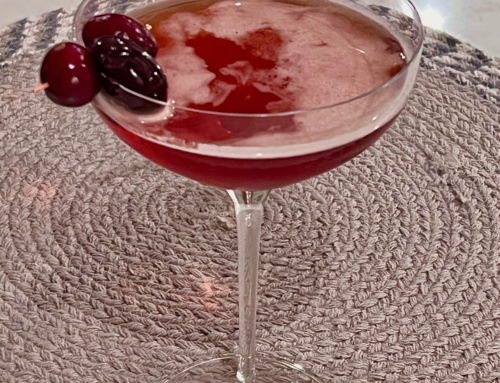
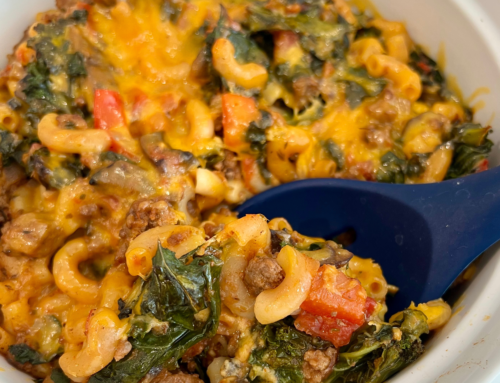
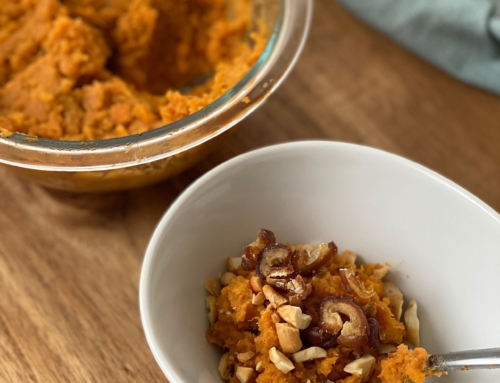
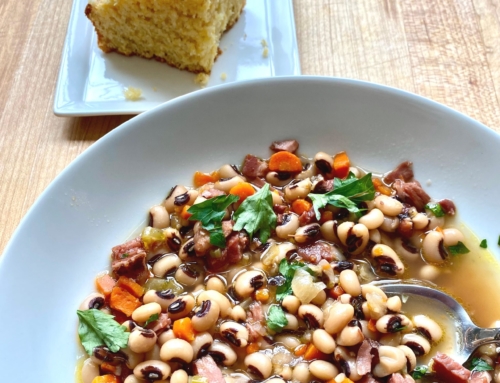
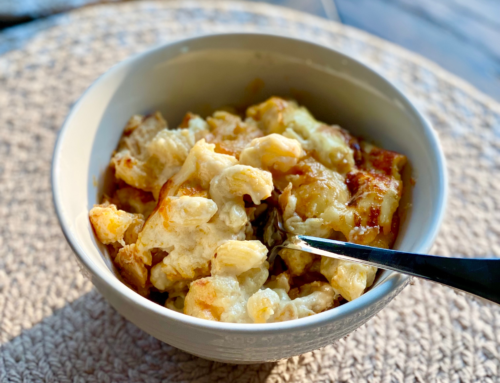
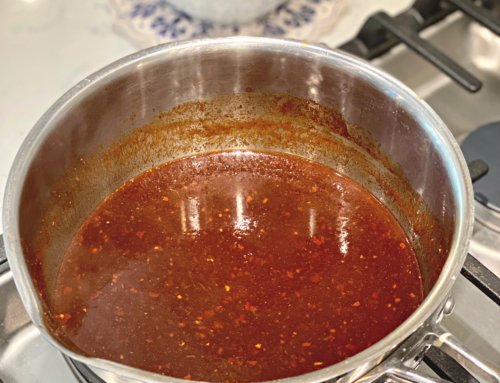
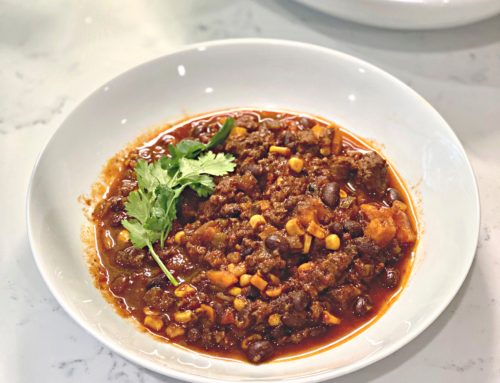
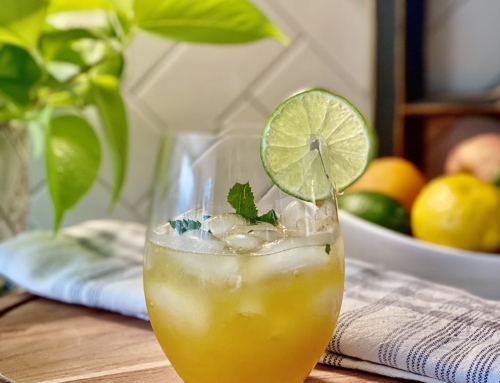
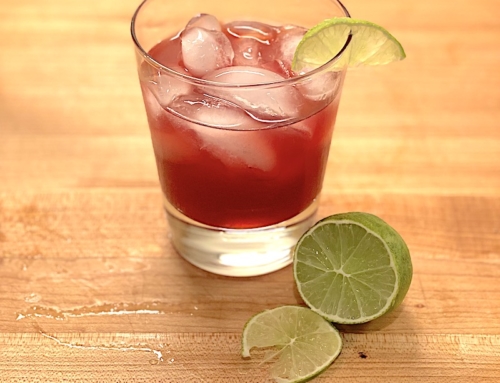
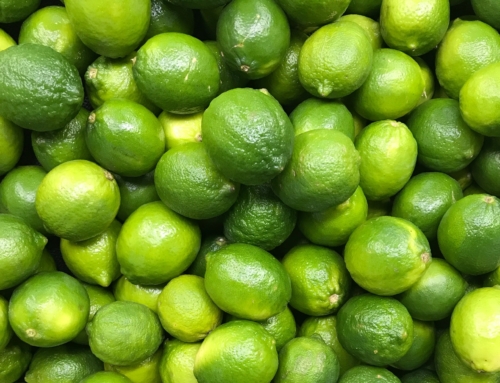
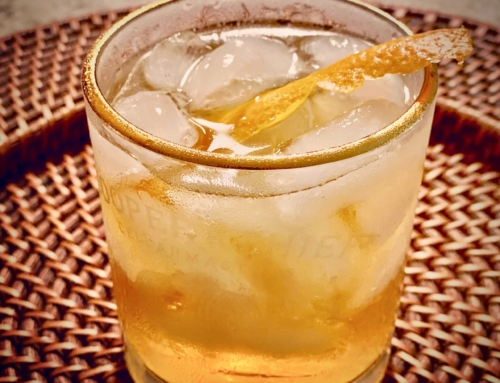
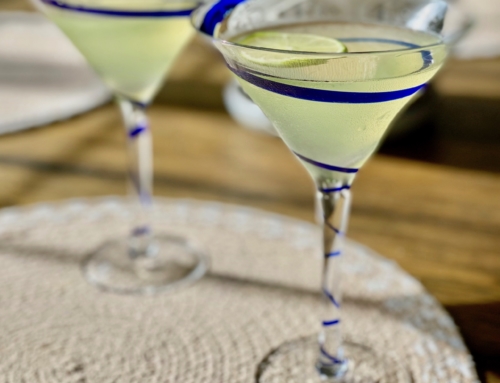
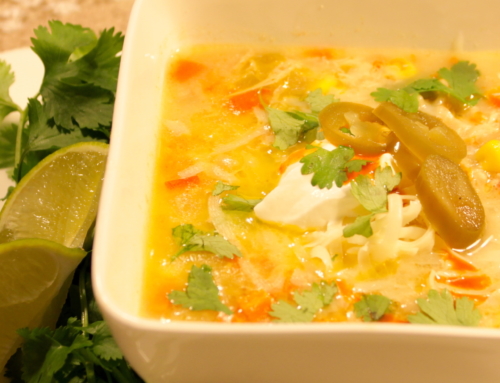
[…] starter — make one from scratch here — it’ll take about 10 days but it’s so worth […]